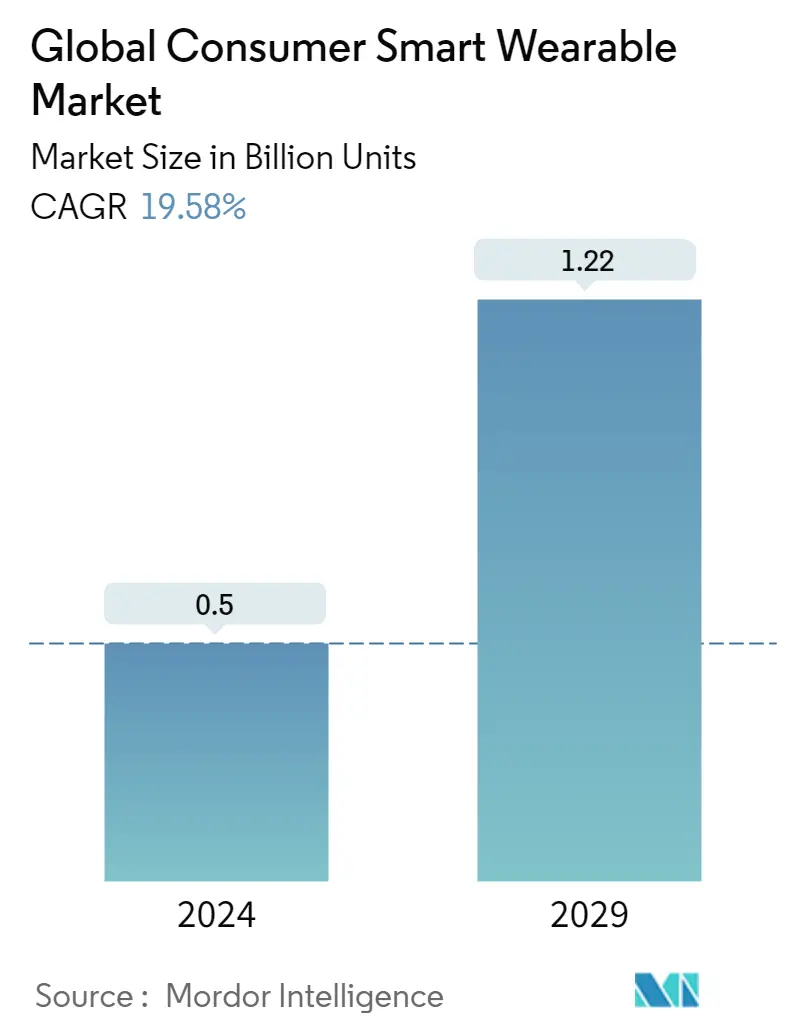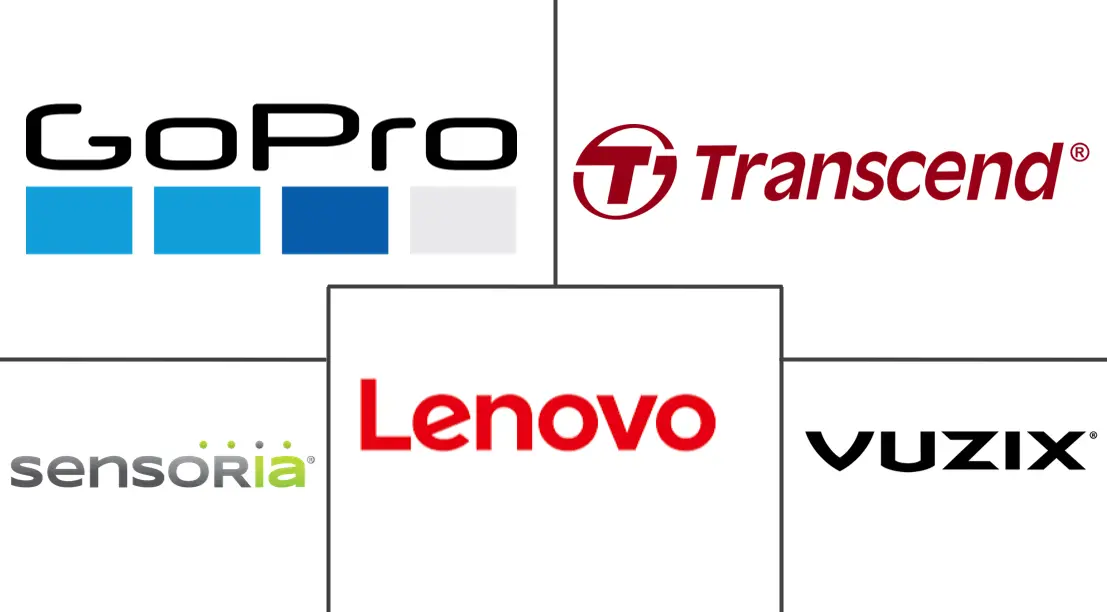Market Size of Global Consumer Smart Wearable Industry

| Study Period | 2019 - 2029 |
| Market Volume (2024) | 0.50 Billion units |
| Market Volume (2029) | 1.22 Billion units |
| CAGR (2024 - 2029) | 19.58 % |
| Fastest Growing Market | Asia-Pacific |
| Largest Market | Asia-Pacific |
Major Players
*Disclaimer: Major Players sorted in no particular order |
Need a report that reflects how COVID-19 has impacted this market and its growth?
Consumer Smart Wearable Market Analysis
The Global Consumer Smart Wearable Market size is estimated at 0.5 Billion units in 2024, and is expected to reach 1.22 Billion units by 2029, growing at a CAGR of 19.58% during the forecast period (2024-2029).
Wearable technology, an emerging trend, integrates electronics into daily activities and addresses the changing lifestyles with the ability to be worn on any part of the body. Factors such as the ability to connect to the internet and provide data exchange options between a network and a device are leading to the trend of wearable technology.
- The rising penetration rates of urbanization in various parts of the world have driven the demand for advanced, aesthetically appealing products that possess the ability to serve the consumers' requirements better, such as multiple features in one device and time schedules. Moreover, the vast millennial population across the globe has been quick to adopt smartwatches, owing to the increased spending ability on their regular work hours tracking and luxury standards.
- Machine learning and AI capabilities take skills to the next level, especially in the current healthcare industry. In support of this, IoT compatibles smart wearable sensors are also witnessing a decline in pricing, which leads to manufacturers offering smart wearable devices at a more affordable rate, thus, encouraging various industries to adopt products catered to their systems and operations. Additionally, there has been a significant increase in consumer smart wearable devices being sold over the past few years. Additionally, wearable sensor devices have emerged to be a significant part of the sports industry, thereby helping customers to stick to daily routines and providing crucial information regarding the different parameters it is programmed to monitor.
- Smart wearables are further witnessing a surge in the number of new users, including the older age population, owing to the fact that wearable makers, such as Apple and Fitbit, among others, are adding health-monitoring features that appeal to old age people and keep them updated about their health status in real-time.
- Although the adoption of wearables has been widely gaining traction over the past few years, the concern over data privacy persists. Even though data from smart wearables may be of little value to attackers, the risk increases for smart wearables like smartwatches. Risks are likely to increase further if the device comes with an LTE connection, as they can be operated away from the paired device.
- The COVID-19 outbreak and the lockdown restrictions across the globe have affected the consumer across the world. Some of the effects of lockdown include supply chain disruptions, lack of availability of raw materials used in the manufacturing process, labor shortages, fluctuating prices that could cause the production of the final product to inflate and go beyond budget, and shipping problems, among others.

